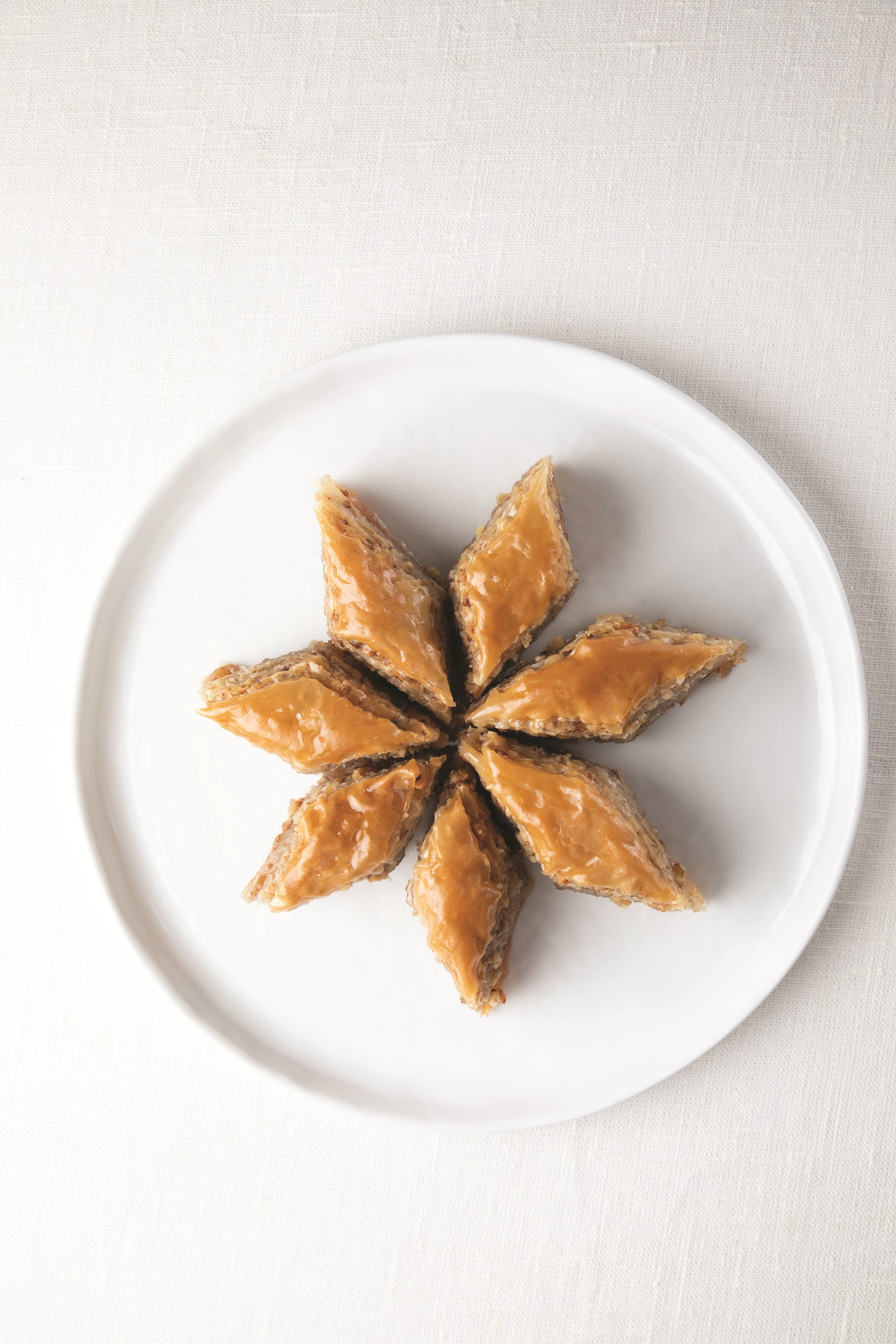Pistachios between 40 layers of dough: All about baklava, a Tusk dessert that awakens all the senses
Baklava, the world-famous sherbet dessert, is one of the most prominent delicacies of Turkish cuisine and should not be missed during your visit to Turkey. If you are looking for a special opportunity to try Turkish baklava and learn about its journey from imperial kitchens to modern tables, November 17th is World Baklava Day!
Irresistibly crunchy and juicy, baklava is certainly a dessert that will satisfy the senses of even the most picky sweet tooth. This sweet dessert is made by placing crushed pistachios, walnuts or hazelnuts between 40 layers of thin and specific crusts before baking and then pouring sugared sherbet over it.
A royal, ceremonial dessert
The making of baklava was perfected in the imperial kitchens of the Ottoman Empire, which resulted in it becoming a world-renowned sumptuous dessert with a sophisticated taste. It would only be prepared by master chefs, specially trained for making baklava, especially during big celebrations and important ceremonies. While the skillful hands of the masters created the perfect taste of baklava, with numerous layers of paper-thin crust, this unique dessert has passed into the present as a culinary heritage. Passed down from generation to generation, with a traditional taste and an elaborate recipe, baklava satisfies the desire for sweets every time, whether it decorates our tables after a meal or is served at home. Serving on special occasions such as weddings and Eid is still a cherished tradition.
TGA
The first registered taste of Turkey: Gaziantep baklava
Most would agree that the best baklava is made in Gaziantep, in the southeastern region of Turkey. In 2013, the European Commission granted Gaziantep baklava the status of protected designation of origin, making it the first Turkish product registered on their list. It is not surprising that the amazing taste of Gaziantep baklava is confirmed, as the city is a culinary paradise with an impressive cuisine known for its superb delicacies. The city’s kitchen has previously earned praise by entering the UNESCO network of creative cities in gastronomy.
Making baklava, like in the Ottoman imperial kitchens, in Gaziantep is passed down from generation to generation through a master-apprentice relationship. The only way to achieve this distinctive taste is skill, patience, attention to detail and precision. The masters stretch the dough into 40 or 45 layers and fill them with local pistachios and butter. Baklava is then baked in a stone and oak oven, and after baking it is covered with sherbet.
When it comes to tasting Gaziantep baklava, it stimulates all the senses. First you see its golden yellow color, then you hear the rustling of the dough layers and feel the aroma of fresh pistachios and butter. In the end, it leaves a very light but juicy taste on the palate. Enjoy and have fun!

TGA
Endless variations
Although Gaziantep baklava is the most popular, this dessert stands out for its variety and special taste in each region. The biggest difference between the types of baklava is the filling. In each region, the filling for baklava is prepared from available local ingredients. As Turkey has a vast geographical area with different microclimates and local products, the ingredients for the baklava filling vary. For example, Gaziantep baklava has a pistachio filling, while hazelnuts are used in the Black Sea region. Baklava filled with walnuts is popular in central Anatolia, and in Thrace you can enjoy baklava filled with almonds or topped with sesame.
Other varieties of baklava are given different names according to the way they are cut and the ingredients. Among the various varieties named according to the way they are cut are “havuč dilimi baklava” (carrot baklava), “midye baklava” (mussel-shaped baklava) and “bulbul juvasi” (nightingale’s nest baklava). When it comes to ingredients, “sutlu nurije” is made with milk instead of sherbet, “pistachio sarma” (pistachio wrap) and “jeviz sarma” (walnut wrap) have huge amounts of nuts compared to the original baklava, and “kuru (dry) baklava is characterized by less sherbet.
Find out everything about events in business, stay up to date with lifestyle topics. SUBSCRIBE TO OUR NEWSLETTER
Source: BIZLife
Photo: TGA
Source: bizlife.rs


